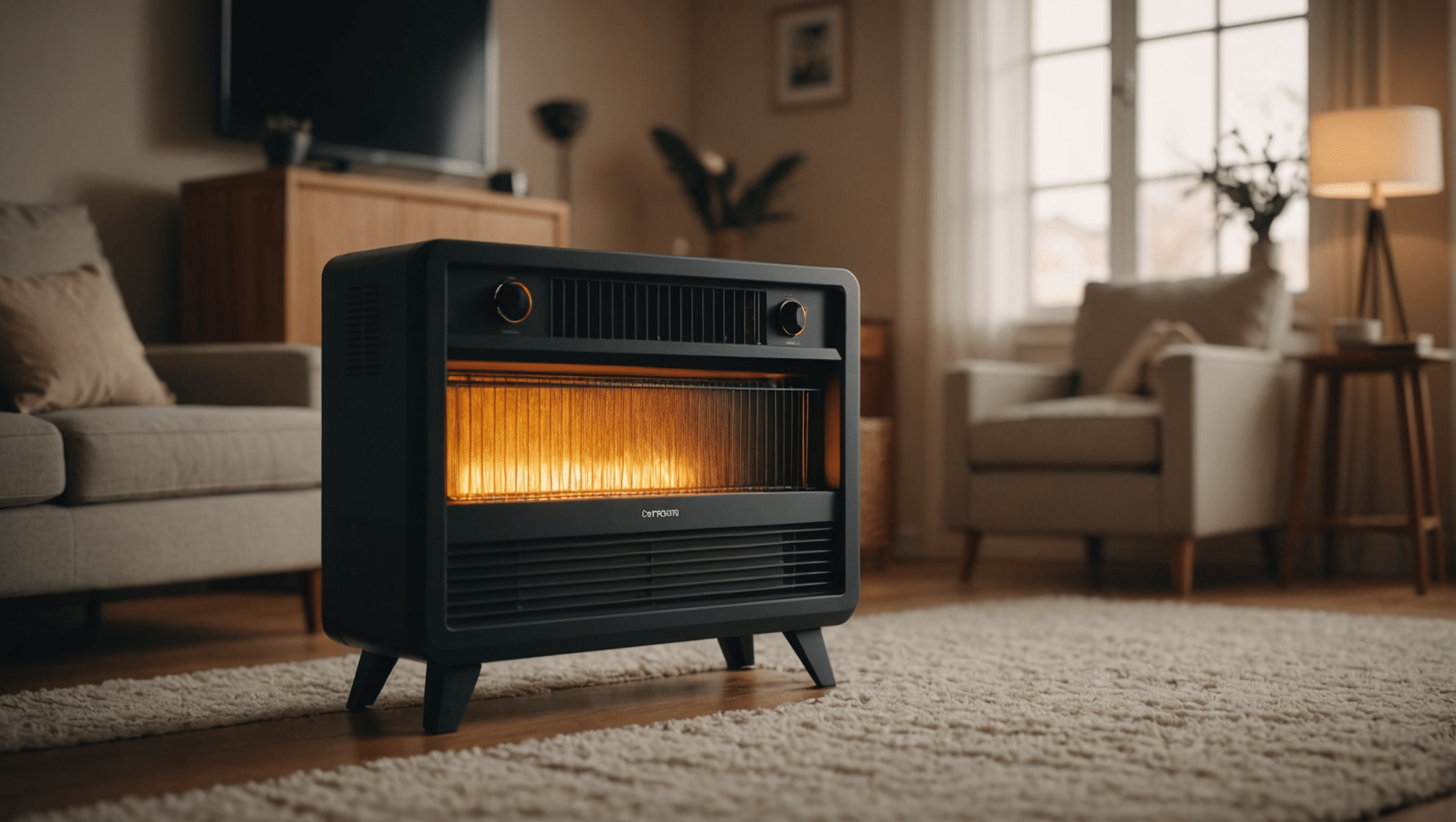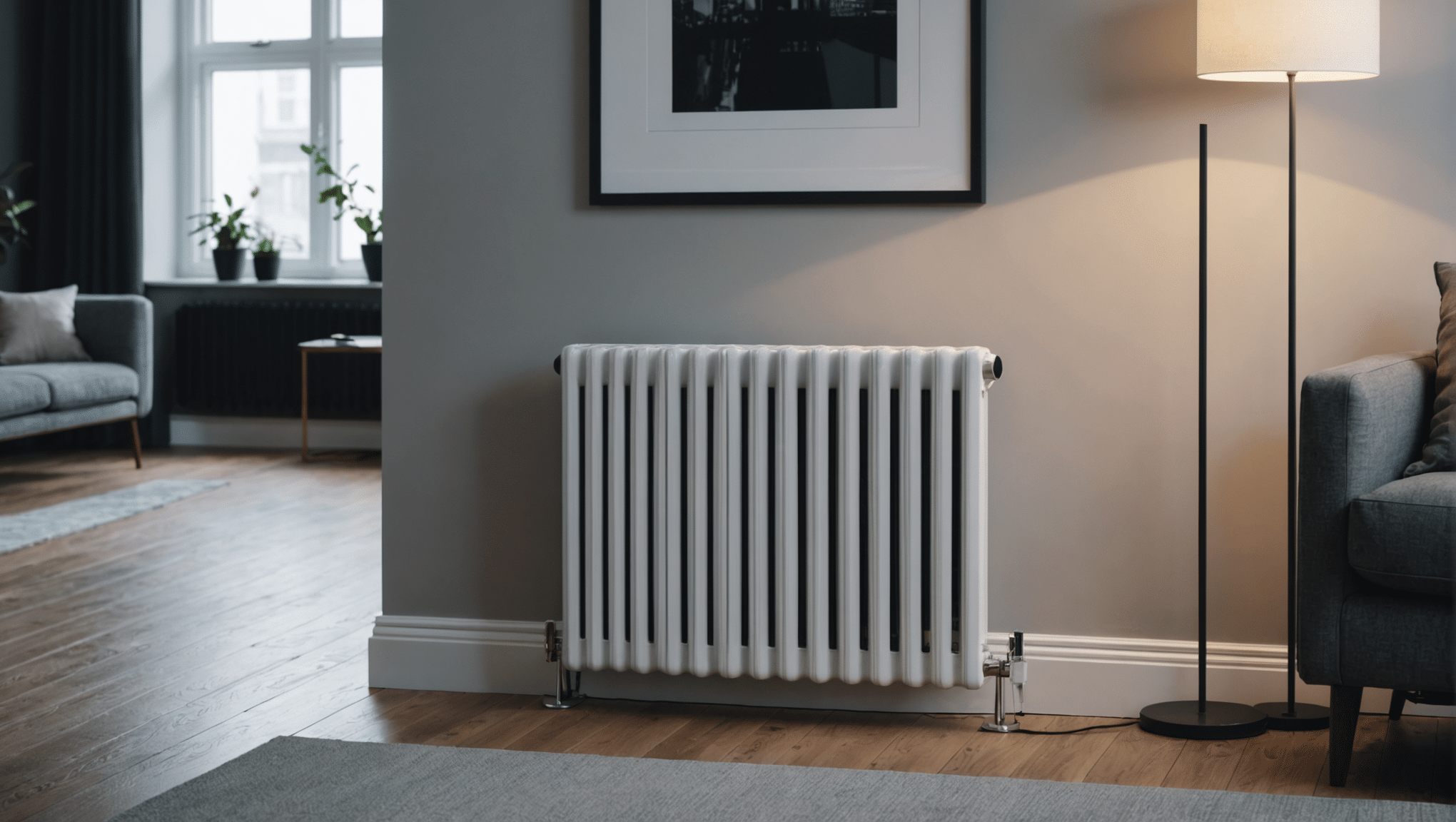
How Do Electric Heaters Work? Discover the Science of Efficient Heat
Discover how ELECTRIC HEATERS convert ELECTRICITY into HEAT using innovative heating elements, ensuring efficient warmth for any space. Uncover the types of heaters that match your needs.
Last Updated on 06/10/2025
Electric heating has become increasingly popular as a modern, efficient way to heat homes. This article will explore the basic principles behind electric heaters, detailing how they convert electricity into heat and highlighting the benefits of various types of electric heating systems for different space heating needs.
How do electric heaters convert electricity into heat?
Electric heaters use a heating element that creates heat through electrical resistance. As electricity flows through this element, resistance generates heat, which is then distributed via convection, radiation, or a fan. This process efficiently warms the surrounding space.
Key Features of Electric Heating Systems
- Heating Elements: Convert electricity into heat using electrical resistance, powering efficient warming.
- Thermostat Control: Maintains desired temperature, ensuring energy-efficient heating.
- Versatile Types: Options like fan, convection, and infrared heaters suit diverse spaces.
- Silent Operation: Many heaters, especially electric radiators, provide quiet warmth without fans.
- Eco-Friendly: Paired with renewable sources, electric heaters offer a low-carbon footprint.
- Energy Savings: With timers and program settings, these heaters reduce energy waste.
- Low Maintenance: Electric systems avoid complex piping, making installation and upkeep simple.

How Electric Heaters Work
Electric heaters work by converting electricity into heat through heating elements, typically using a process called electrical resistance. This happens when an electric current flows through a resistor within the heater, causing it to generate heat. The heat produced is then distributed into the room, either through radiation, convection, or a fan-driven airflow. Each method serves to warm spaces effectively, depending on the type of electric heating system used.
In general, electric heaters consist of several basic components. These include a power source, heating element, thermostat, and often a fan to help circulate warm air. The thermostat controls the heater’s temperature, ensuring energy-efficient operation. Fan heaters, for example, rely on a fan to push warm air out, while convection heaters distribute heat naturally through air movement.
Electric heaters are versatile and come in many types, such as fan heaters, infrared heaters, and storage heaters, each suitable for different space heating needs. Understanding how these heaters work provides a solid foundation for choosing the right electric heating option to match your home’s layout, comfort requirements, and energy preferences. Check out our electric heaters selection for a variety of options.
Different Types of Electric Heating Systems
Electric heating systems come in various forms, each designed to suit different environments and heating needs. Fan heaters, for instance, are ideal for quickly warming up smaller spaces. Convection heaters, on the other hand, allow heat to naturally rise, gradually warming a room through air movement. Infrared heaters work differently, radiating heat directly to people and objects without heating the surrounding air.
Electric radiators are another popular type, as they provide efficient, consistent warmth, especially for longer durations. Unlike fan or convection heaters, electric radiators work by using a heating element within a liquid-filled unit. This design allows them to distribute heat evenly and maintain warmth even after the power is off, making them a reliable choice for ongoing comfort.
For larger areas or those requiring sustained heating, storage heaters are a common option. These units store heat during off-peak hours and release it throughout the day. Understanding the various electric heating options can help you find the best system based on room size, energy costs, and your personal comfort preferences.
Electric Radiators and How They Work
Electric radiators are specially designed for efficient, steady warmth, making them popular in homes and offices. These heaters contain a heating element inside a sealed, liquid-filled casing, typically with either oil or water. The liquid helps distribute heat evenly across the radiator’s surface, allowing the unit to warm up gradually and maintain a comfortable temperature.
One advantage of electric radiators is that they don’t rely on fans, meaning they operate silently. They’re often equipped with a thermostat for precise temperature control, making them an energy-efficient option. The heating mechanism also continues to release heat for some time after switching off, thanks to the stored warmth in the liquid-filled casing.
Because of their consistent performance and silent operation, electric radiators are a great choice for bedrooms and living areas. They’re particularly beneficial in settings where steady warmth is more desirable than rapid heating. Electric radiators’ design makes them ideal for sustained comfort and low-maintenance operation, with a sleek look to blend in with modern interiors.
Benefits of Electric Heating
Electric heating offers numerous advantages, including ease of installation and low maintenance. Unlike traditional heating systems like boilers, electric heaters don’t require complex piping or regular servicing. This makes them a straightforward and convenient choice for various spaces, whether it’s a single room or an entire building. Plus, they’re generally safer, with fewer combustion-related risks.
Another benefit is energy efficiency. Many electric heaters come with thermostats and timers, which allow users to control when and how long they run the heater. This level of control helps reduce energy waste, lowering overall heating costs.
Electric heating is also an eco-friendly choice, especially when paired with renewable energy sources. Modern electric heaters are designed to be energy-efficient, often achieving high Coefficients of Performance (COP) when compared to other systems. For individuals looking to reduce their carbon footprint, electric heating presents an opportunity to heat spaces sustainably.
Choosing the Right Electric Heater
Choosing the right electric heater depends on several factors, including room size, heating requirements, and energy costs. For smaller spaces, a fan heater may be sufficient, as it quickly warms the area and is easily portable. However, for larger rooms or spaces where noise might be an issue, an electric radiator or convection heater could be a better fit due to their quieter operation and even heat distribution.
When selecting an electric heater, it’s important to consider its efficiency and the heating element type. Radiant heaters, for example, are ideal for targeted warmth, whereas convection heaters work better for evenly heating larger rooms. For areas requiring all-day warmth, storage heaters are a cost-effective option as they utilize cheaper, off-peak electricity.
Lastly, modern electric heaters often come with smart features, like programmable thermostats and remote control via smartphone apps, adding convenience and efficiency. By evaluating these factors, you can select an electric heating solution tailored to your home’s needs. This selection guide fills a common gap by focusing on practical advice to match electric heating with specific heating needs and preferences.
| Electric Heater Type | Heating Method | Best Use |
|---|---|---|
| Fan Heater | Uses a fan to circulate warm air | Small, enclosed spaces |
| Convection Heater | Heats air, allowing warmth to rise naturally | Medium to large rooms |
| Infrared Heater | Radiates heat directly to objects and people | Targeted heating in open spaces |
| Electric Radiator | Liquid-filled casing for even, steady warmth | Long-term room heating |
| Storage Heater | Stores heat during off-peak hours | Cost-effective, all-day warmth |
Conclusion
Electric heaters offer efficient, convenient heating solutions for a range of spaces. Understanding how electric heaters work helps in choosing the right model to meet your needs, whether you seek quick warmth or steady, all-day heating options.
At Viking, we’re committed to providing cost-effective, environmentally conscious workplace solutions. Our selection of electric heaters combines performance with energy efficiency to create a comfortable, productive environment. Explore our options to find the ideal heating system for your workplace today.
Frequently Asked Questions
How do electric heaters generate heat?
Electric heaters generate heat by passing an electric current through a heating element, typically made of metal or ceramic. This element resists the electric current, causing it to heat up and radiate warmth into the surrounding air through convection, radiation, or fan-driven airflow. This process efficiently converts electricity into usable heat.
What types of electric heaters are available?
Common types of electric heaters include fan heaters, infrared heaters, convection heaters, and electric radiators. Fan heaters quickly warm small areas, while convection heaters gradually distribute warmth throughout a room. Infrared heaters focus on heating objects directly, and electric radiators offer steady, even heat for longer durations, making them suitable for larger spaces.
Are electric heaters energy-efficient?
Electric heaters are generally energy-efficient, especially those with thermostats and timers that control heat output to reduce energy waste. Storage heaters, which use off-peak electricity, are particularly cost-effective. Overall, electric heating is efficient and eco-friendly, especially when powered by renewable energy sources, offering a sustainable option for residential heating needs.
How do electric radiators differ from central heating systems?
Electric radiators are standalone units that heat specific spaces, while central heating systems heat entire buildings through a network of radiators connected to a boiler. Electric radiators provide more targeted, flexible heating, ideal for supplementing central heating in specific areas or during milder weather without activating the full central system.









